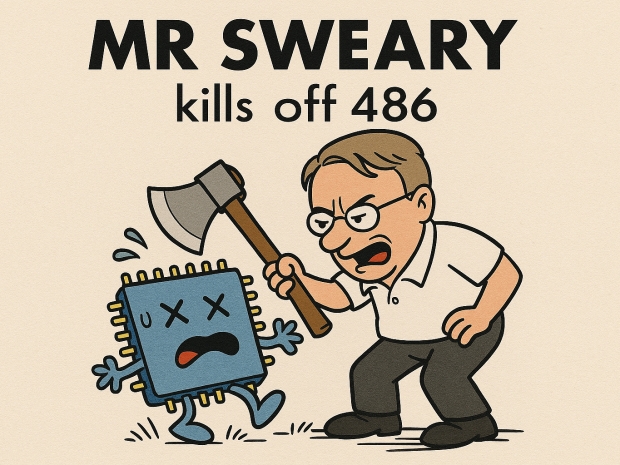Foir those who came in late, Intel’s 486 processor launched in 1989 and was the first x86 chip to integrate a floating-point unit and full 32-bit architecture, kicking off the era of truly usable Windows machines. By the late '90s, it had been eclipsed by the Pentium line, and while Microsoft officially pulled the plug with Windows XP in 2001, Linux kept the lights on for another two decades until its final retirement in 2025.
After Linux 6.15, the kernel will no longer support Intel’s ancient 486 chips or the first batch of Pentium processors lacking Time Stamp Counter (TSC) and CMPXCHG8B (CX8) instructions. That means the end of the road for silicon like the IDT WinChip and AMD’s Elan range.
IT’s Mr Sweary Linus Torvalds on the Linux Kernel Mailing List, grumbling, “I really get the feeling that it's time to leave i486 support behind. There's zero real reason for anybody to waste one second of development effort on this issue.”
Senior kernel bod Ingo Molnar backed the move, adding that ancient CPU support has created messy “hardware emulation facilities” in x86-32 code that “very very few people are using with modern kernels.”
This marks the first time since 2012 that Linux has dropped a major CPU family, the last being the 386. From now on, any chip still trying to load a modern kernel will need to at least support basic mid-'90s instructions.
You can still run Linux on these fossils if you like pain, but as Torvalds quipped in 2022, you’ll be stuck using “museum kernels.”
Good luck finding a working floppy to boot one.




